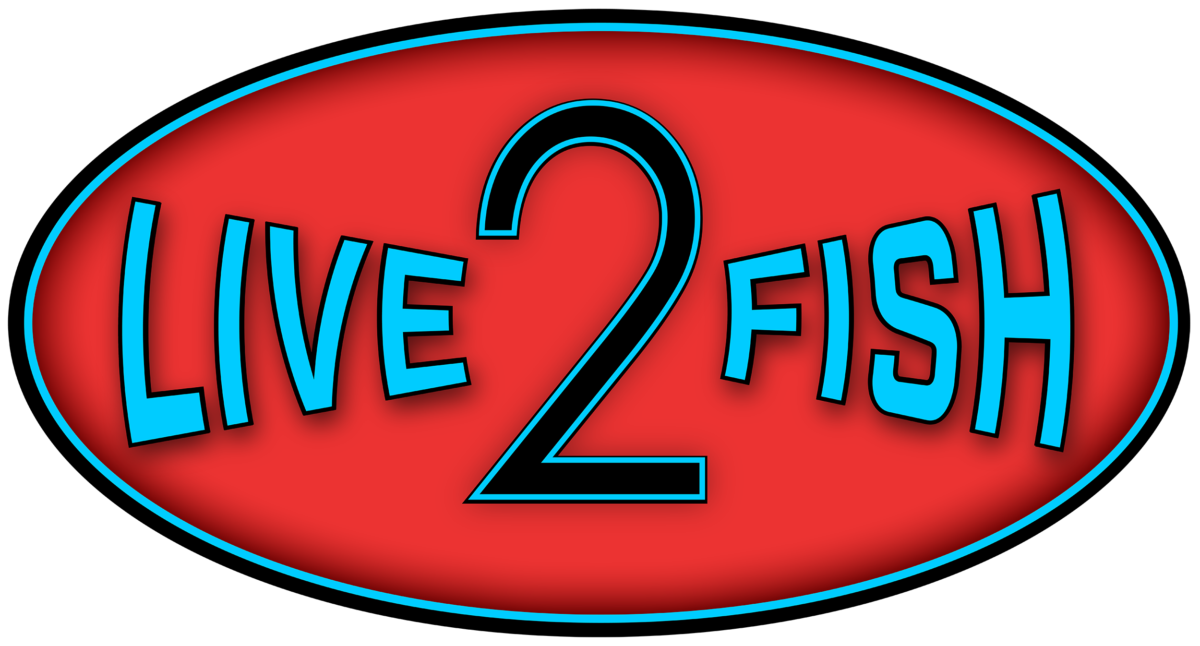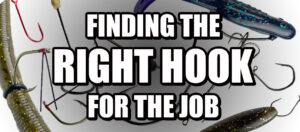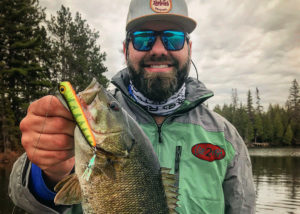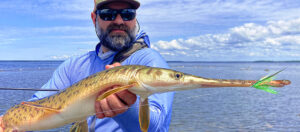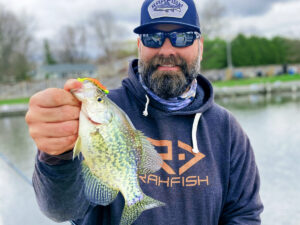Walk into a tackle shop and there is often a wall of fishing line making “what line should I use” a daunting question. There is monofilament, fluorocarbon, copolymer, and braided lines that all do different things, come in different strengths and colours, look different and have vastly different price tags. But it doesn’t have to be that hard! There are a few things you have to consider, like what you are fishing for and how you are fishing for them and the answer will be easy. Here are some of the things that will help with your decision.
Cost-Affordability
The price tag often effects your decision, and rightfully so. You work hard for your money and the more money you keep, the more you can fish. But when you compare the costs of different types of line and the way they perform, cost shouldn’t always play as big a factor as you might have initially thought. Both fluoro & braid, because of their resistance to damaging UV rays of the sun, will last much longer than mono therefore justifying the price. Because of the susceptibility to UV damage, mono should be changed at least once a year.
Here is a look at what the cost per yard of the average fishing lines is.
- Mono/Copolymer – $10 a 300 yard spool – APROX 0.03 cents a yard
- Braid – $23 a 300 year spool – APROX 0.07 cents a yard
- Fluoro – $27 a 200 yard spool – APROX 0.13 cents a yard
Line Stretch
Line stretch can be either a pro or a con dependent on the situation and presentation. The stretch in the line will act similar to a shock absorber, more stretch, more absorbing. Zero or low line stretch enhances the sensitivity of the line, gives you more pulling power and allows for a more solid hook set. Some line stretch might be wanted when using certain presentations, a popular one is crank baits and topwater, in these, and other situations, it helps to hook up with fish and land them.
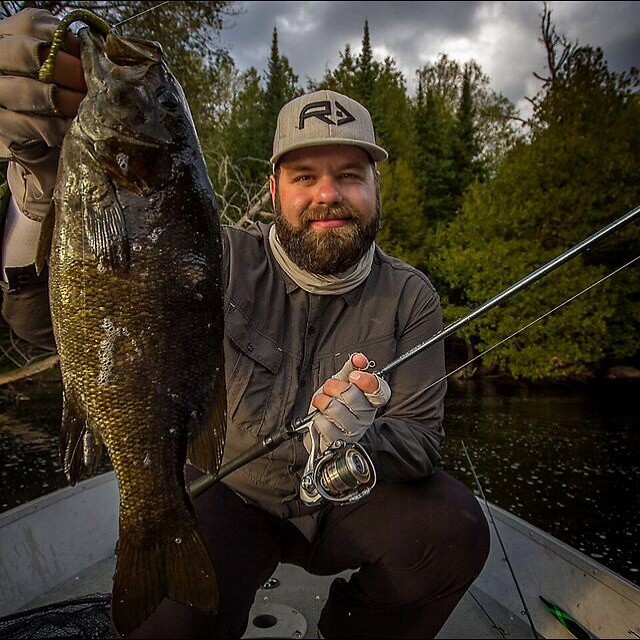
Using braid as a main line with floor as a long leader gives you the added benefits of each.
These are the average line stretch of your most common fishing lines.
- Mono/Copolymer – Most stretch – average 30%
- Braid – Zero stretch – 0%
- Fluoro – Close to zero stretch – average 4%-10%
Abrasion Resistance
Have you have ever lost a fish when everything seemed right? The drag was set properly, you where not horsing the fish, the fish didn’t jump, but still the line broke? Chances are there was abrasion in the line which caused a weak spot. Some lines like fluorocarbon are extremely abrasion resistant, even used as bite leader for pike and muskie. Braid in comparison, as it is a thread, is much less abrasion resistance. Mono is the middle child when it comes to abrasion resistance, not as tough as fluoro but a little better at resisting getting chewed up than braid.
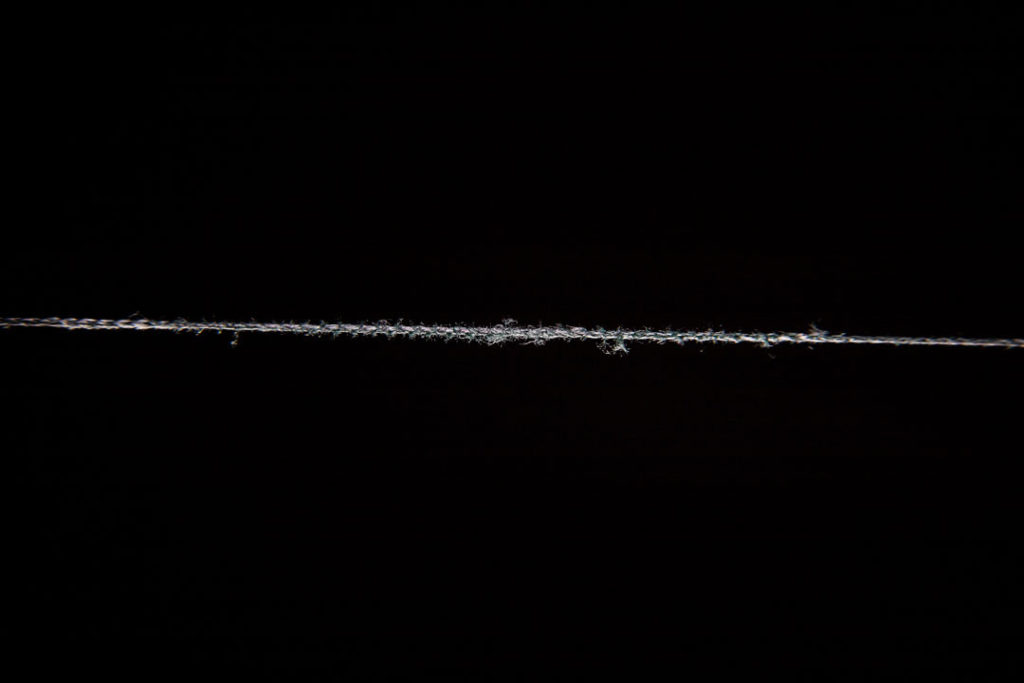
Abrasion on Braided Line 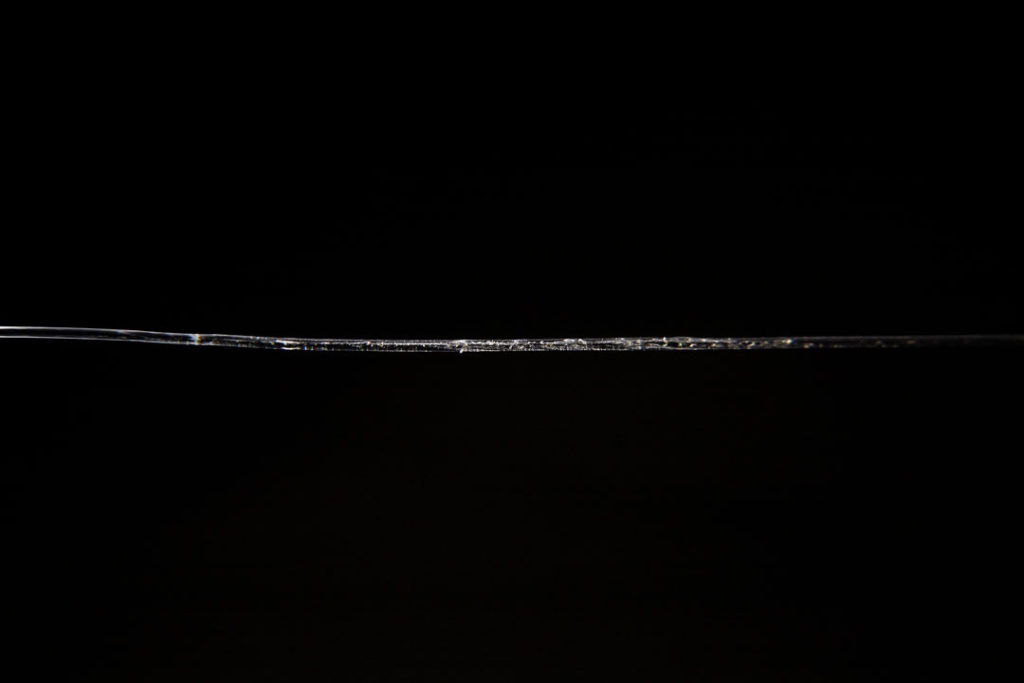
Abrasion on Monofilament Line
Line Memory
Line memory is a tricky thing, it is what causes loops to fly off of your reel when you open your bail, your line from coiling up on the water when you put slack in the line, or when the line starts to wrap around the guides. The less memory that a line has the more manageable it is, with the possible exception of the thinnest of braids. Thin braids are so soft that if you are not meticulous with how you manage it, it cuts into itself, tangles, and gets into everywhere. With mono and fluoro the thicker the line the more memory it will have.
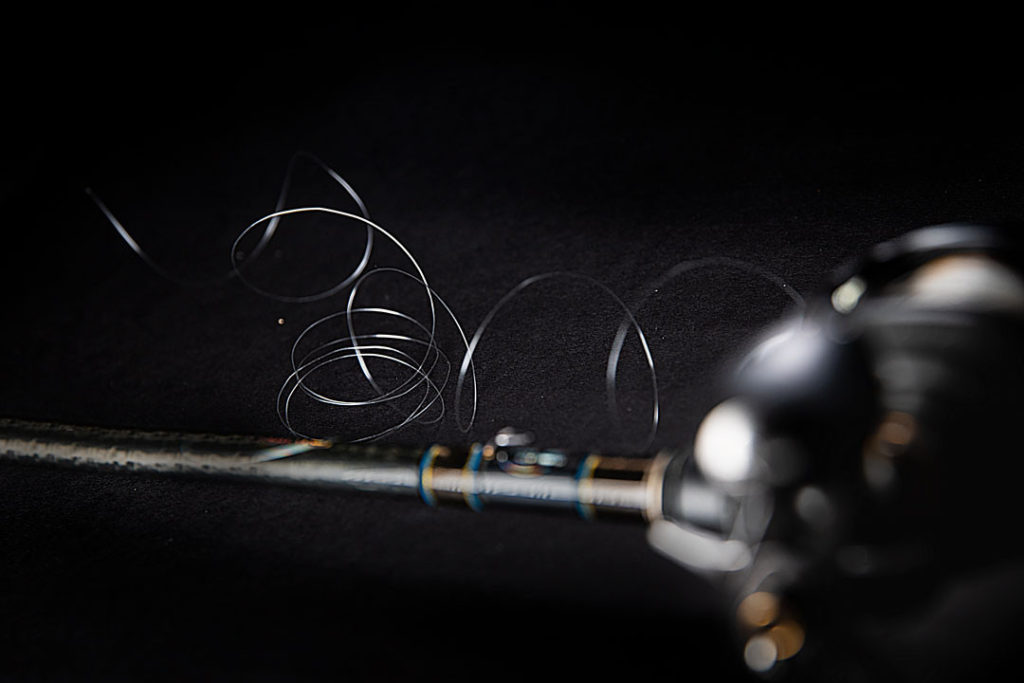
- Mono/Copolymer – Moderately high memory
- Braid – Zero memory and very pliable
- Fluoro – High memory – Hardest to manage
Knot Strength
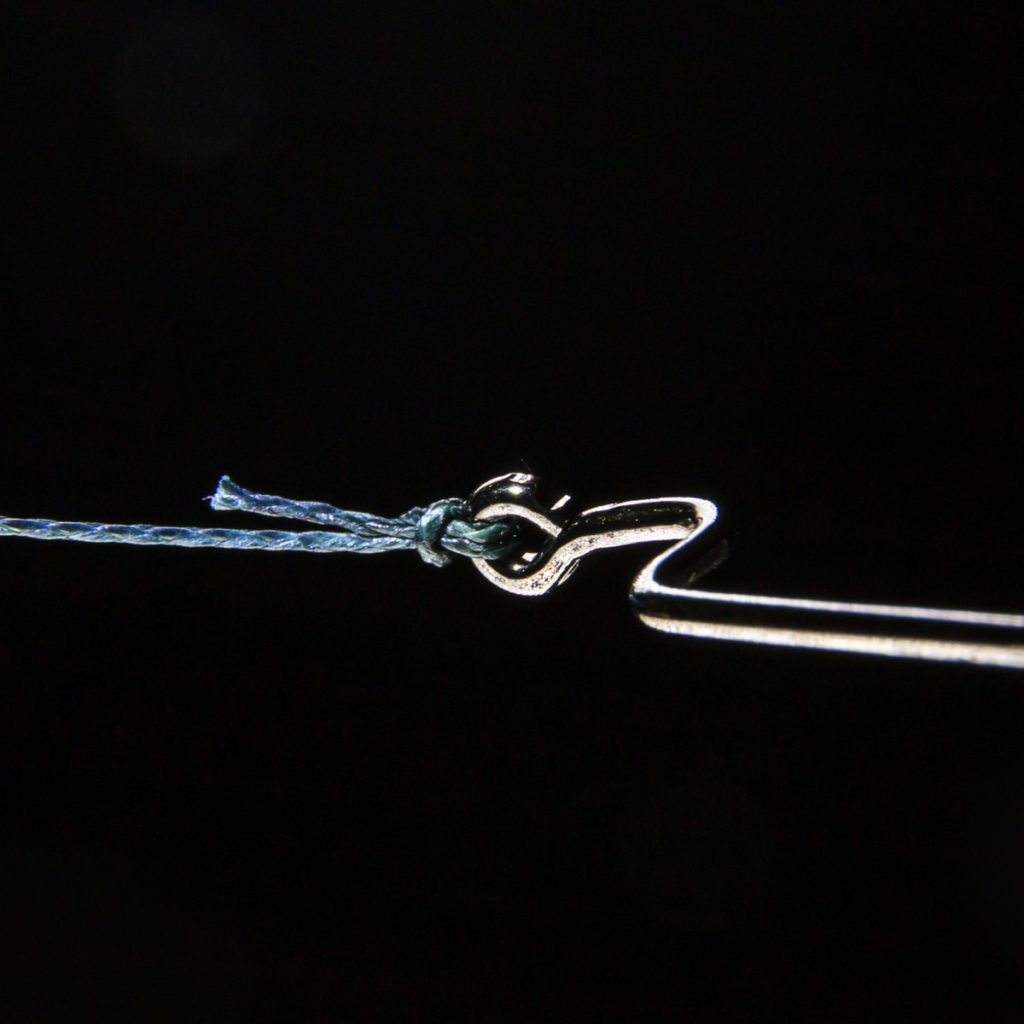
Palomar Knot 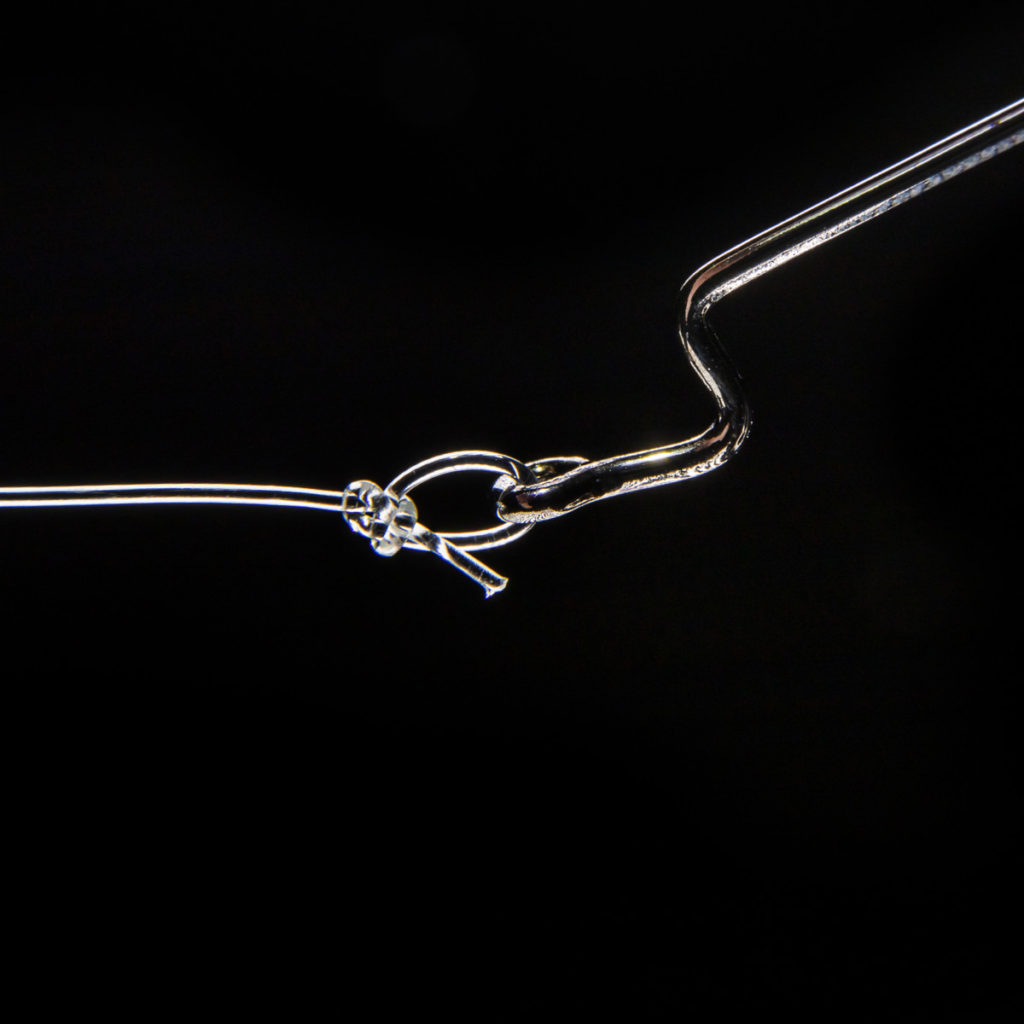
Canoeman Knot 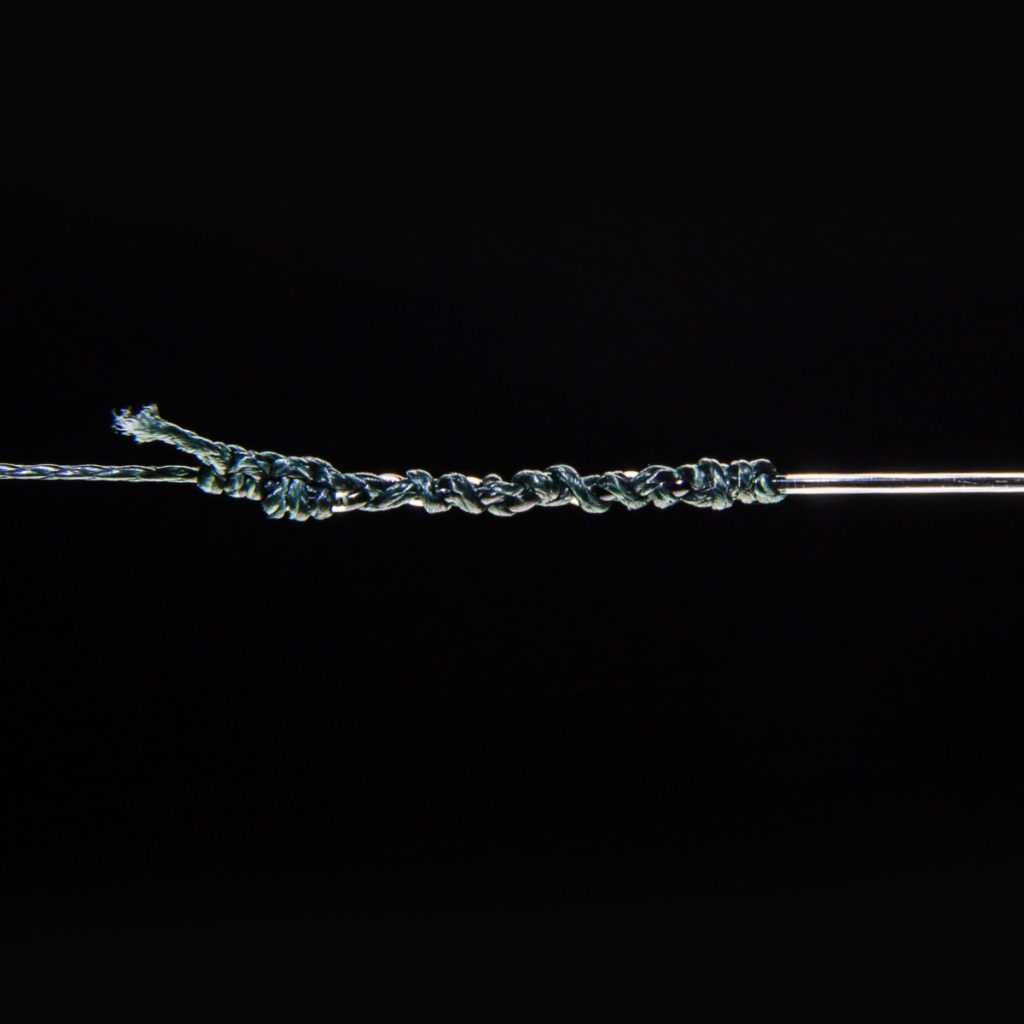
FJ Knot 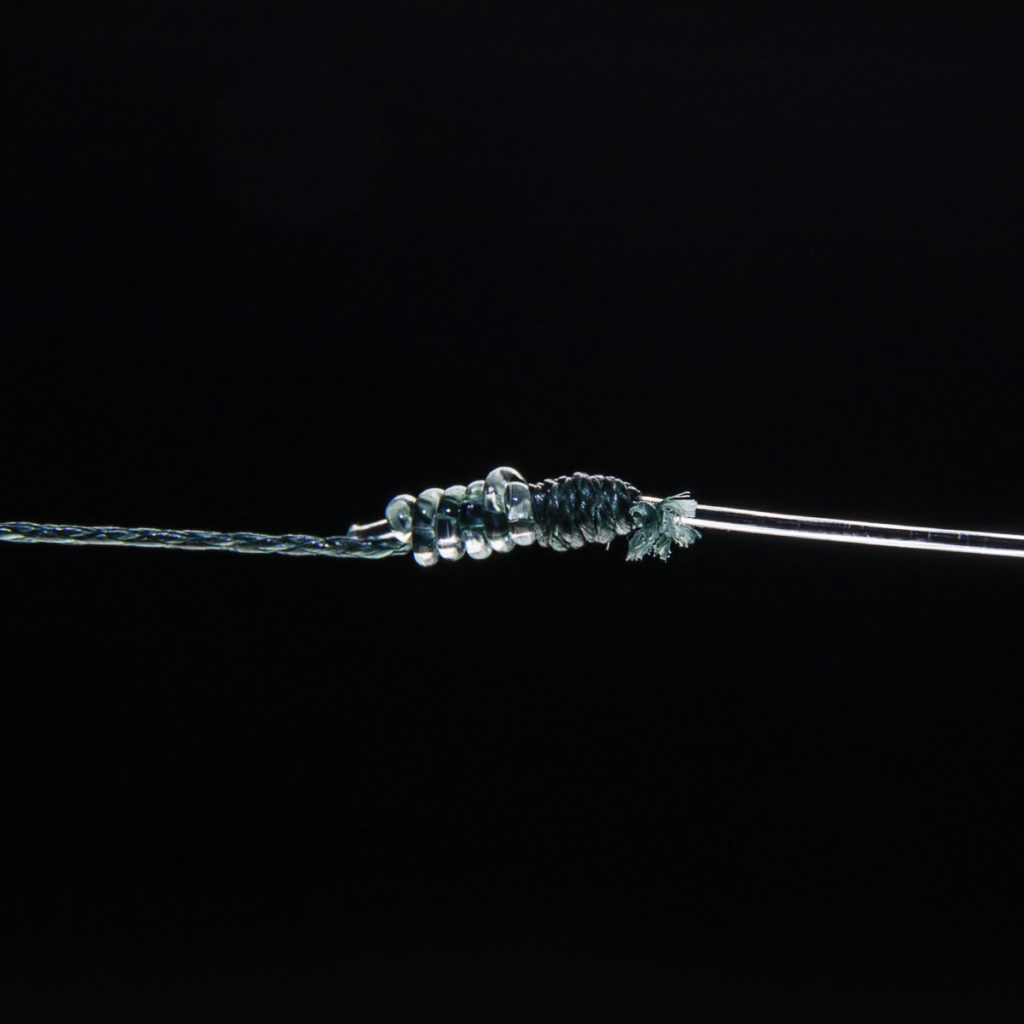
Uni to Uni knot
- Mono/Copolymer – Moderate knot strength, does not cut easily through itself. Works well with jamming and clinching knots
- Braid – Great knot strength, does not cut through itself. Best used with clinching knots.
- Fluoro – Good knot strength but prone to cutting itself. Best used with jamming knots.
Line Diameter to Strength Ratio
There is always a balance between strength and line diameter, which is directly connected to power vs finesse. When braid came onto the market, a line that thin and that strong, it changed the game. The downside to braid was it was opaque and the fish can see it, so the power vs finesse balance struggle continues.
Here is the breakdown for the fishing line diameter to strength ratio.
- Mono/Copolymer – Mono-Moderate line diameter
- Copolymer – Thinner line diameter
- Braid – Thinnest line diameter e.g. 50 lbs. test Braid = 12 lbs. test
- Mono Fluoro – Similar to Mono/Copolymer
Visibility
Visibility is extremely important when pursuing pressured fish. You can get away with using a thicker line if it is harder for the fish to see, and like what braid did to the strength to diameter game, fluorocarbon changed the visibility game. With the same refractive light index as water fluorocarbon becomes virtually invisible underwater.
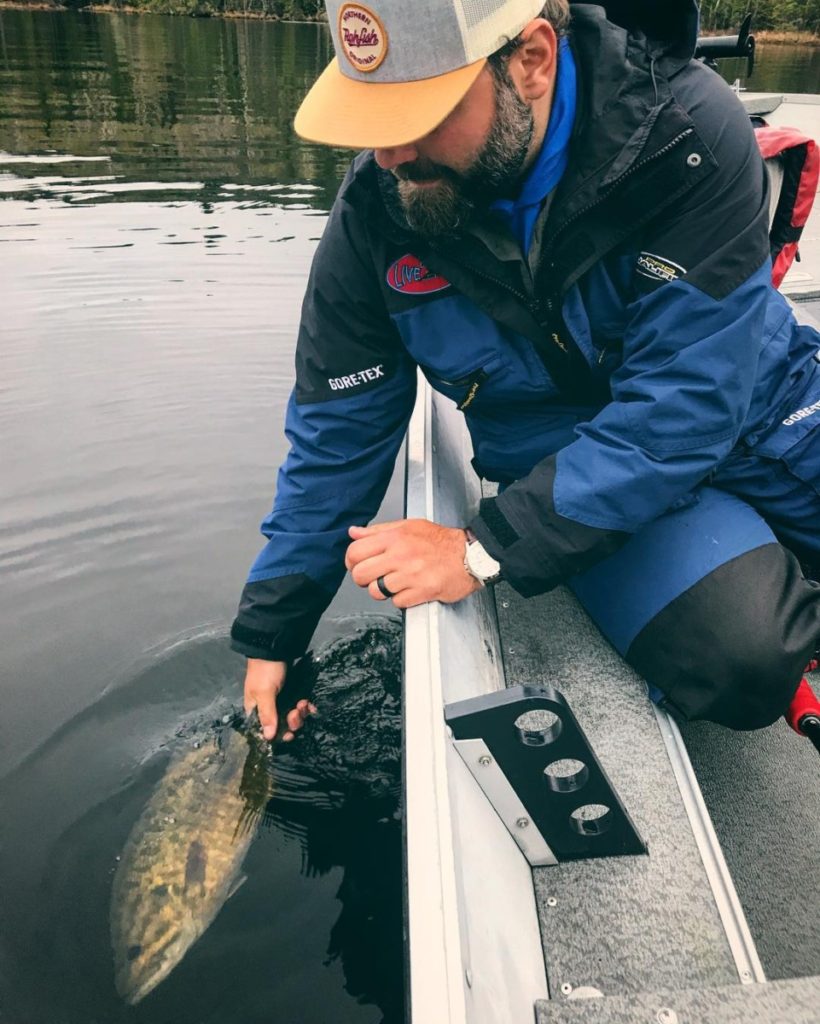
- Mono/Copolymer – Clear/tinted but still visible to fish
- Braid – Highly visible compared to other lines
- Fluoro – Same “refractive light index” as water, virtually invisible underwater.
Water Absorption
Water absorption plays a larger effect on monofilament than anything else. Mono is made from nylon which is highly absorbent, and if in the water for a long period of time the line will absorb enough water to reduce the strength by up to 10%. Copolymer took all the advantages of mono and coated it in fluoro to help with abrasion resistance and underwater visibility, with a happy side effect that it made it relatively waterproof.
Here is the list
- Mono-High Absorption Copolymer – Low Absorption
- Braid – Moderate Water Absorption, can vary due to coating
- Fluoro – Low to Zero Water Absorption
Susceptibility To Damaging By UV Rays
All lines should be stored in a cool dry location, but some lines are more susceptible to damage from the sun. The damaged line will be weak and there is no way to come back from it.
- Mono/Copolymer – Very susceptible to the Sun’s damaging UV rays
- Braid – highly resistant to UV damage
- Fluoro – Very resistant to UV damage
Buoyancy
The buoyancy of the fishing line makes it more suitable for certain presentations. Floating lines are necessary for topwater presentations so that you are not pulling the lure under the water, sinking lines reduce the amount of bow in your line when you are fishing on the bottom, giving you a more direct connection to the hook.
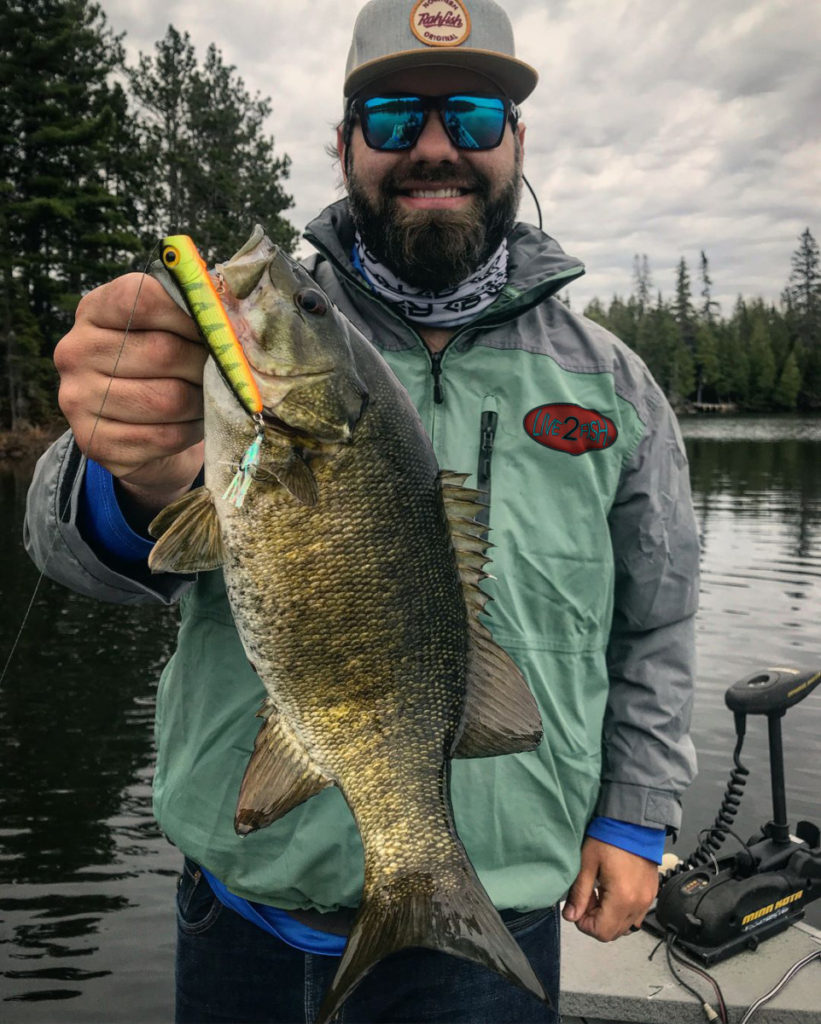
- Mono – Highly Buoyant
- Copolymer – Sinks
- Braid – Buoyant
- Fluoro – Sinks
